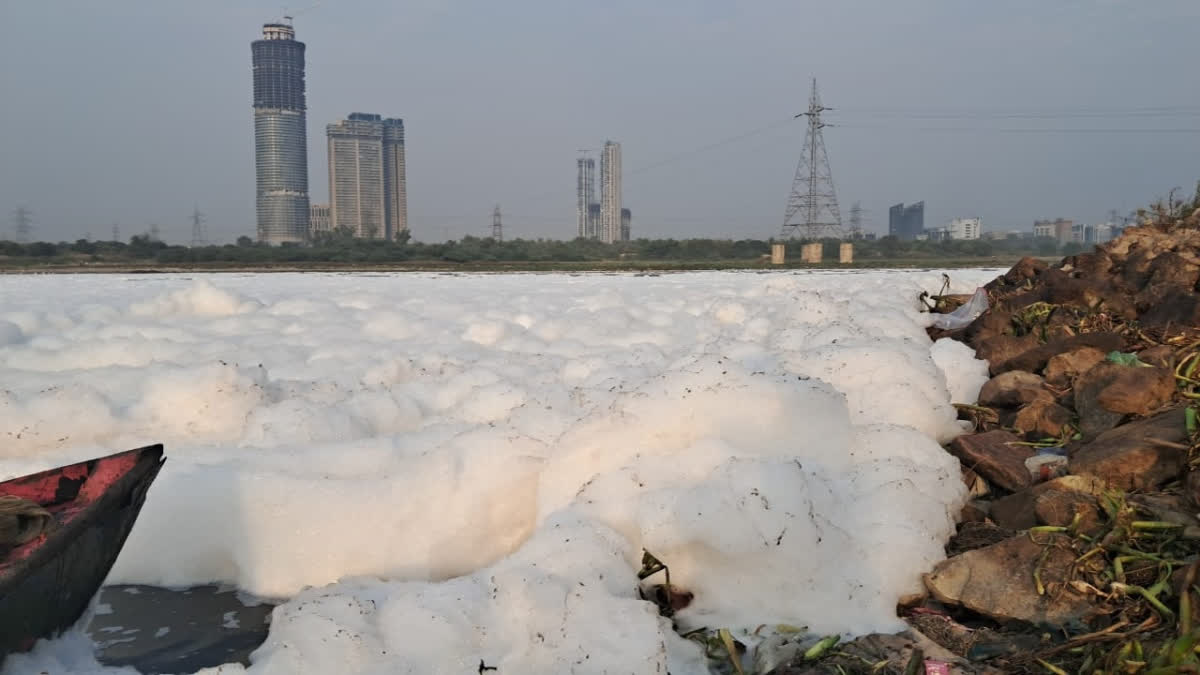New Delhi: River Yamuna is a topic of discussion due to its polluted water. Many agencies of the Delhi government like the Water Board, Irrigation and Flood Control Department, PWD, Delhi Municipal Corporation and the Centre are trying to clean the River Yamuna under various schemes.
However, the River Yamuna is getting more polluted day by day. Jeevkant, the convener of Nadi Samvad Sanstha, said that Yamuna passes through many states and the governments always abdicate their responsibility by blaming each other.
Delhi has the highest share in the amount of dirt that the river gets. It flows from Yamunotri to Sangam in Prayagraj. According to a study, only two per cent of River Yamuna passes through Delhi, but 80 per cent of Yamuna becomes dirty here due to dust and pollution. In the 1370 km long Yamuna, Delhi's 22 km stretch between Wazirabad and Okhla is becoming the most toxic, the study said.
In the last five years, many steps have been taken by the Delhi government to clean the river. Rs 6,856.91 crore was spent on various things to reduce water pollution between 2017-18 and 2021-22. Most of this amount has been spent on plants to clean the water of drains falling into the Yamuna.
In the current fiscal, a provision of Rs 200 crore has been made for cleaning the Yamuna. The Delhi government has prepared many plans to clean the Yamuna. Despite this, there are many challenges. Several plants have also been set up in this direction, but not even half of them have been operational to date.
According to experts, the Najafgarh drain contributes 70 per cent to the pollution of Yamuna. The AAP government has decided to revive the Sahibi River. A budget of Rs 700 crore has also been allocated for cleaning the water of the Najafgarh drain. Under this, floating wetlands and floating aerators will be used. After this cleaning, efforts will also be made to bring the Sahibi River to its previous state.
"The primary task of the central and state governments should be to prevent drain water from falling into the Yamuna. Similarly, it is also necessary to increase the amount of water released from Hathini Kund Barrage to Delhi, so that the flow of Yamuna River can be maintained," said Jeevkant.
The Delhi Pollution Control Committee report also states that the deadline for setting up 40 new decentralised sewage treatment plants (STPs) has been reduced. 29 of these plants are expected to be ready by December 2024.
Currently, about 960 million gallons per day (MGD) of sewage is generated in Delhi, of which only 55 per cent is being treated. The current capacity of 35 plants is 632 MGD, but they are currently cleaning only 530 MGD of sewage.
The opposition BJP and Congress lashed out at the AAP government over the condition of the river. BJP leader Harish Khurana said, "The AAP government has made a provision to spend crores of rupees every financial year for cleaning the Yamuna, but the situation remains the same."
He also reminded that Chief Minister Arvind Kejriwal had promised to clean the Yamuna by 2024, but that has not happened.
Delhi Congress chief Devendra Yadav said, "The people of Delhi are troubled, whether there is an NDA government at the Center or proxy government in the state.
He said corruption is the main reason for the condition of the river Yamuna and that many drains are falling into the Yamuna without treatment. "Who is responsible for this situation, this is a big question," Yadav said.



